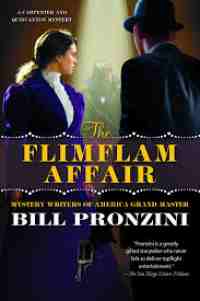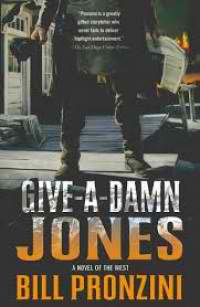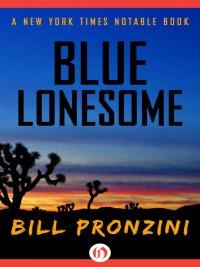The Flimflam Affair by Bill Pronzini
 Friday, January 18, 2019 at 6:41AM
Friday, January 18, 2019 at 6:41AM 
Published by Forge Books on January 15, 2019
I’m a fan of Bill Pronzini’s noir-flavored thrillers and his Nameless Detective series. Pronzini manages to create tight plots and interesting characters with an economy of language that lesser crime writers should study. While Pronzini brings those qualities to the Carpenter & Quincannon series, I am less enthralled by his historical novels. The Flimflam Affair, set in 1897, nevertheless has some entertainment value and ends in a way that might make fans suspect it is the culmination of the series.
John Quincannon has gone north to a mining town to investigate the theft of gold from a railroad safe. He figures out how the thieves managed to open the safe, and thus solves the crime just in time to be summoned back to San Francisco to help his former boss in the Secret Service catch a counterfeiter who supposedly died a decade earlier.
While Quincannon is out of town, an investment broker, hires Sabrina Carpenter to determine whether a spiritualist who summons the dead is a charlatan. The fact that he’s a spiritualist would be a sufficient answer for most people, but the broker’s wife is convinced that communication with the dead is possible. Carpenter takes the case and enlists Quincannon's help when he's back in town. The story turns into a whodunit that the reader will probably solve as easily as Carpenter and Quincannon. More interesting are the secrets used by spiritualists to con their gullible audiences.
The third storyline — and the novel reads like three short stories that were fixed up into a novel — has Quincannon chasing the counterfeiters. The story moves quickly but comes across as something that Pronzini dashed off without putting much effort into the plot. And that may be what happened, because the way the novel ends suggests that he may have written the novel to bring the series to a close in a way that would satisfy fans of the two detectives.
The novel’s virtue lies in the ongoing struggle between Quincannon, who has something of an ego, and his female partner, who might be seen as an early feminist who deserves more glory than Quincannon can easily share. Unfortunately, Carpenter plays a minor role in two of the three stories, which focus on Quincannon’s tenacious investigative style. I probably would have enjoyed the novel more if the two characters had interacted more, but I liked it well enough to commend it to fans of the series. Readers who haven’t read a Carpenter and Quincannon novel probably won’t want to start with this one.
RECOMMENDED


